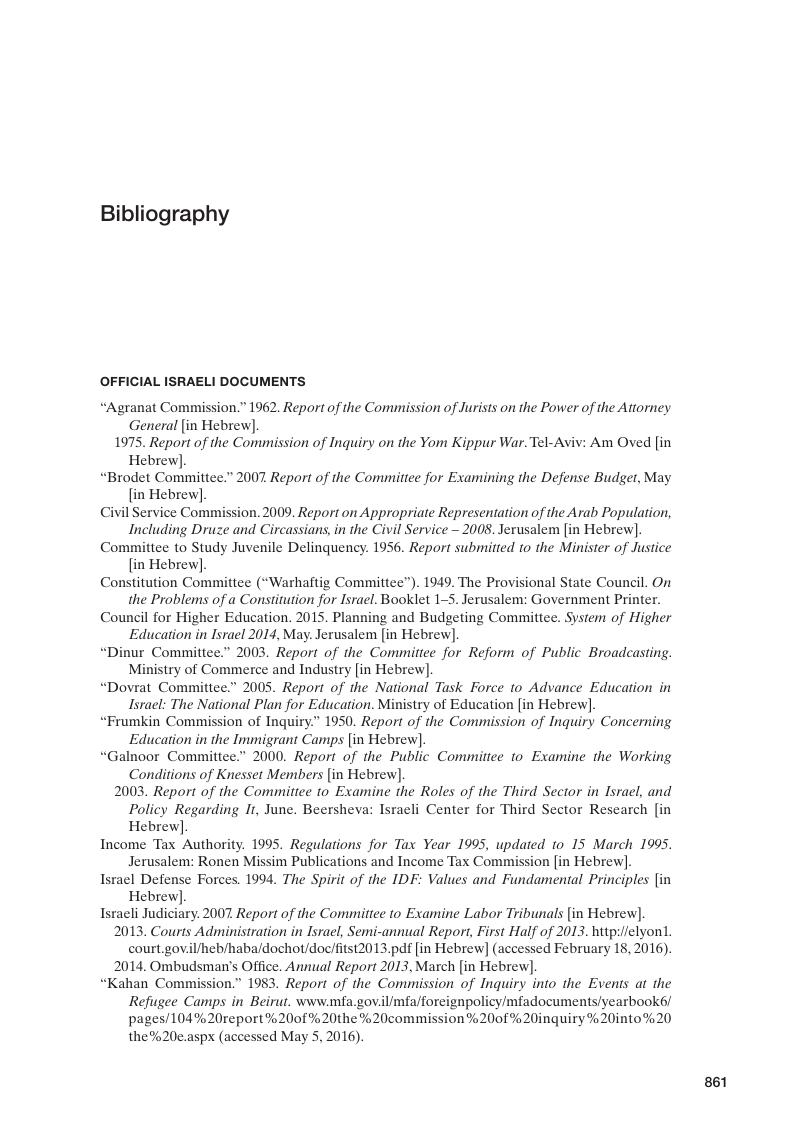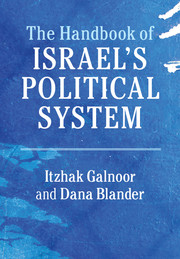Book contents
- The Handbook of Israel’s Political System
- The Handbook of Israel’s Political System
- Copyright page
- Dedication
- Contents
- Figures
- Tables
- Preface
- Acknowledgments
- Part I Establishing the State – The Supremacy of Politics
- Part II Institutions Matter
- Part III Political Society
- Part IV Unresolved Policy Problems
- Part V Democracy in Israel
- Bibliography
- Index
- References
Bibliography
Published online by Cambridge University Press: 30 August 2018
- The Handbook of Israel’s Political System
- The Handbook of Israel’s Political System
- Copyright page
- Dedication
- Contents
- Figures
- Tables
- Preface
- Acknowledgments
- Part I Establishing the State – The Supremacy of Politics
- Part II Institutions Matter
- Part III Political Society
- Part IV Unresolved Policy Problems
- Part V Democracy in Israel
- Bibliography
- Index
- References
Summary

- Type
- Chapter
- Information
- The Handbook of Israel's Political System , pp. 861 - 920Publisher: Cambridge University PressPrint publication year: 2018



